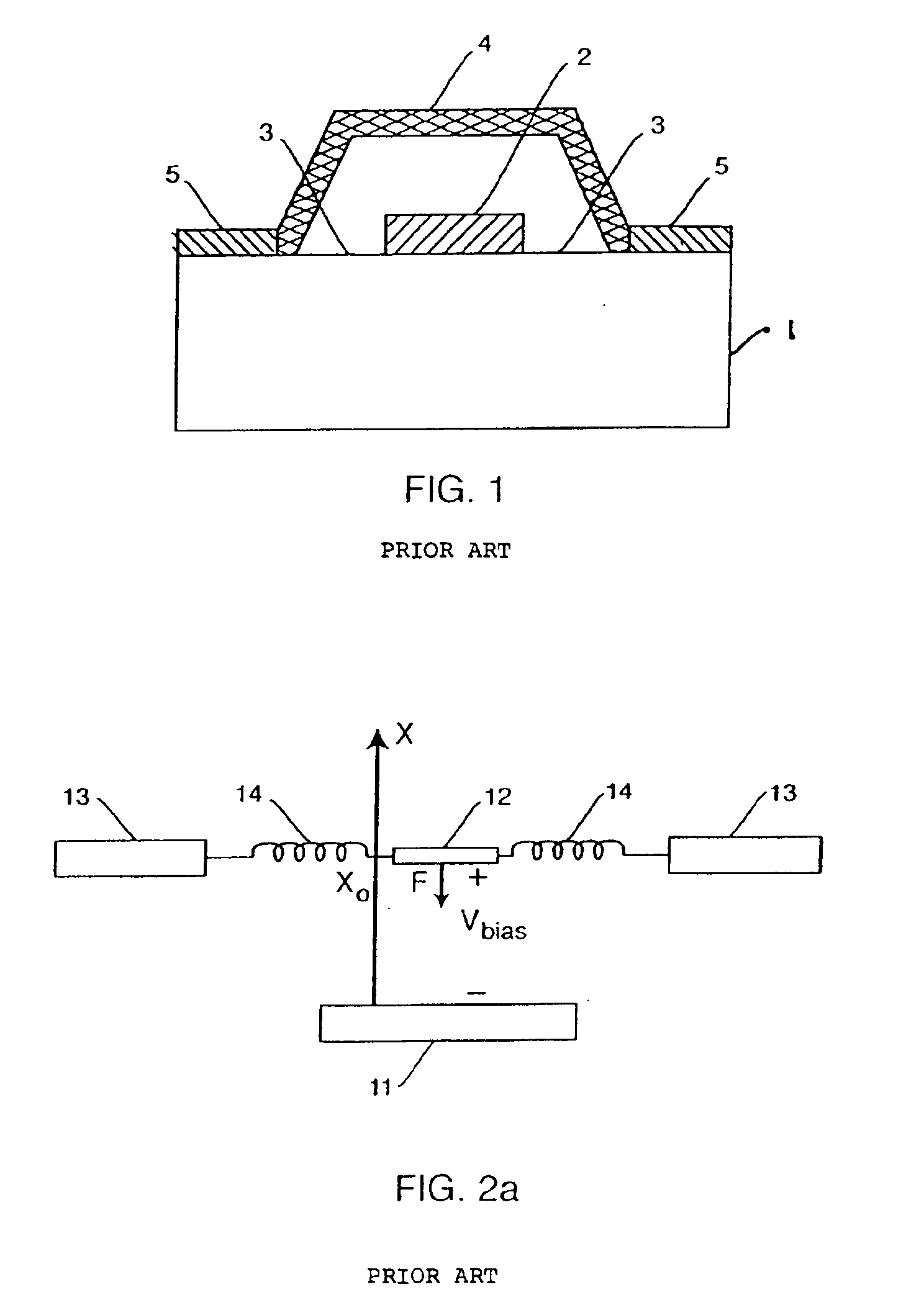Variable capacitance membrane actuator for wide band tuning of microstrip resonators and filters
a microstrip resonator and variable capacitance technology, which is applied in the direction of variable capacitors, capacitors with temperature varied dielectrics, capacitors with electrode area variation, etc., can solve the problems of limited power-handling capability, inability to use, and difficult standard techniques to machine silicon, glass, etc., to achieve low filter insertion loss, low q factor, and small capacitance variation
- Summary
- Abstract
- Description
- Claims
- Application Information
AI Technical Summary
Benefits of technology
Problems solved by technology
Method used
Image
Examples
Embodiment Construction
[0037]FIG. 1 shows a prior art arrangement of a VCMA, as also shown in N. S. Barker and G. M. Rebeiz, “Distributed MEMS true-time delay phase shifters and wideband switches,” IEEE Trans. Microwave Theory Tech., Vol. 46, pp. 1881-1890, November 1998. More specifically, FIG. 1 shows a cross section of a quartz substrate 1 that contains a coplanar waveguide transmission line, having a center conductor 2 and ground plane gaps 3. A gold bridge 4 is fabricated over the center conductor 2, connected to a ground metal 5. As a voltage difference is applied between the center conductor 2 and the ground, the bridge 4 is attracted electrostatically to the center conductor 2, thus deforming the bridge 4. The result is a capacitance increase between the center conductor 2 and ground. The variation of the capacitance can be controlled by controlling the applied voltage difference.
[0038]FIGS. 2A and 2B show a mathematical model corresponding to the arrangement of FIG. 1. According to this model, th...
PUM
 Login to View More
Login to View More Abstract
Description
Claims
Application Information
 Login to View More
Login to View More - R&D
- Intellectual Property
- Life Sciences
- Materials
- Tech Scout
- Unparalleled Data Quality
- Higher Quality Content
- 60% Fewer Hallucinations
Browse by: Latest US Patents, China's latest patents, Technical Efficacy Thesaurus, Application Domain, Technology Topic, Popular Technical Reports.
© 2025 PatSnap. All rights reserved.Legal|Privacy policy|Modern Slavery Act Transparency Statement|Sitemap|About US| Contact US: help@patsnap.com



